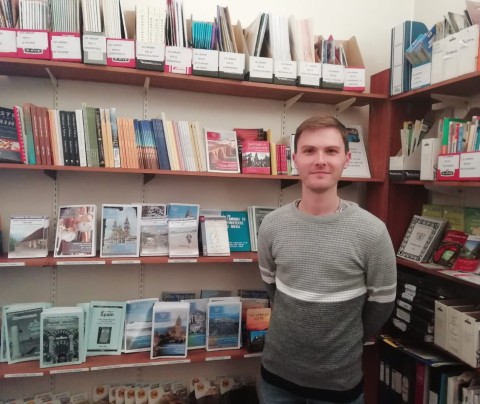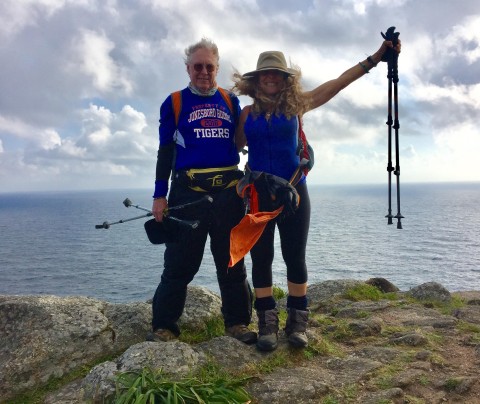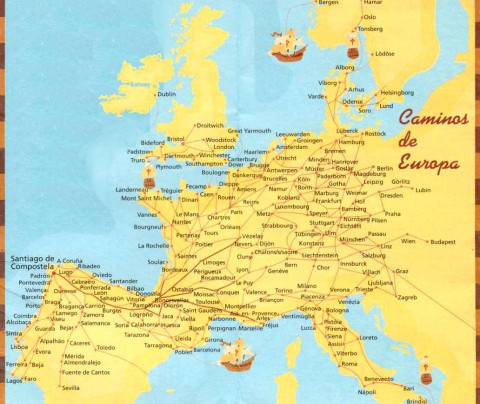Foreigners on the Camino
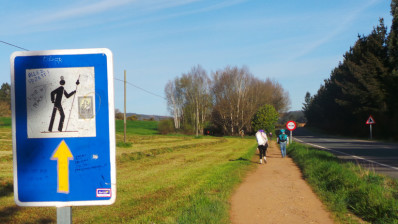
When facing the Camino de Santiago there are two trends with a firm stance on new technologies along our route. Defenders and detractors on the use of devices such as GPS and mobile phones and continuous activity on social media.
For some this adds value to any activity, other think that they prevent the pilgrim from disconnecting from the world and connecting with the Camino.
In this section of our blog, Foreigners on the Camino, we try to focus on issues from the point of view of those pilgrims coming from far away. In this case, we believe that guidance and communication are two essential pillars for safe Camino and technology can help in this regard. The key here is that it doesn’t take us away from the Camino and distract us from our pilgrimage.
To use or not to use
Making the decision to travel the Camino de Santiago with technological devices is today a big and difficult step. We say goodbye to chats with friends and family, to social media (you can’t see our advice on Facebook, Twitter and Instagram), to cameras, to GPS, to accommodation search applications, to weather forecasts to help us plan out our day or being able to make emergency calls.
It is very likely that you don't want to make such a large sacrifice to be disconnected. In any case, we respect both opinions.
Many pilgrims do it and, despite the difficulty, there are many recommendations for total disconnection. However, it important to respect and value the opportunities and advantages of using technology.
Guidance
Travelling with GPS
The Camino is very well marked on all its routes. Travel the Camino del Norte, Primitivo, Vía de la Plata, Mozárabe, Invierno, Sanabrés, Portugués, Inglés or Francés and you'll always find the symbolic yellow arrows that will guide your stages. However, GPS will always be useful. And if you are one of those people who want to make a mental map of the entire territory, the GPS will save you from carrying too much paper!
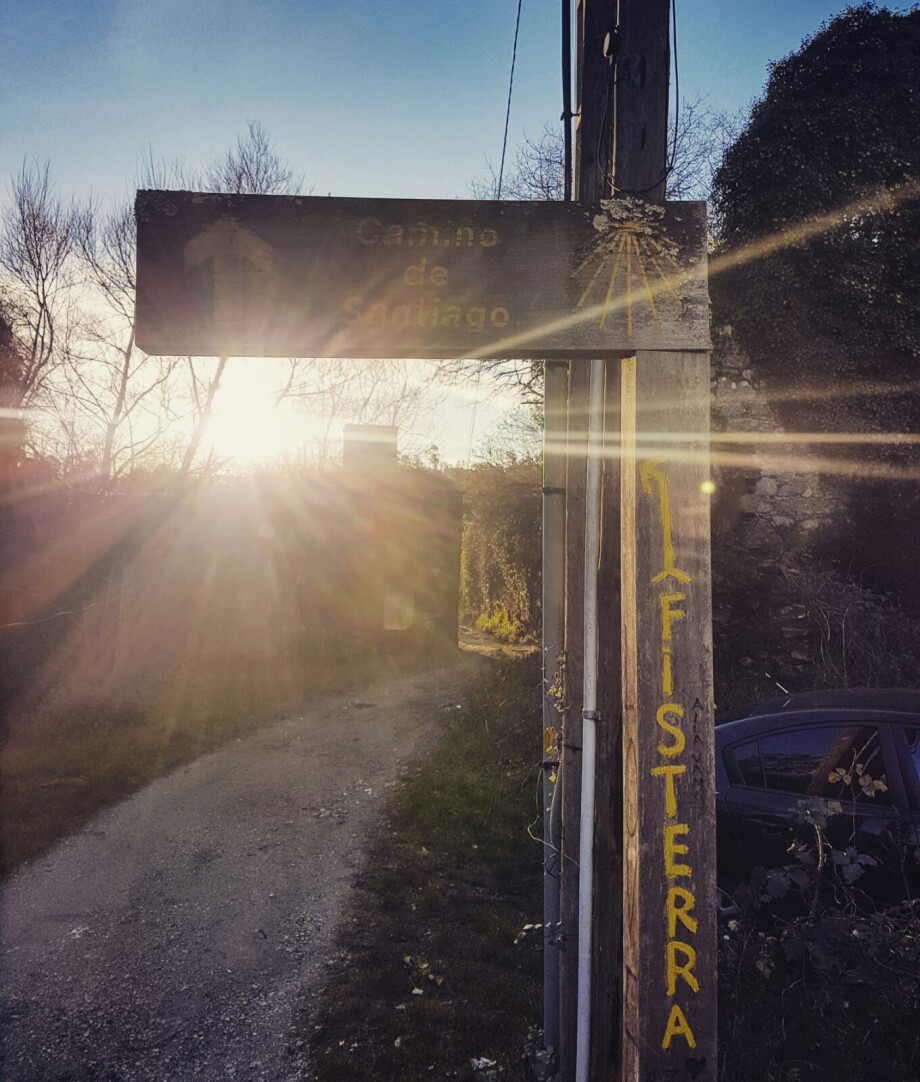
If you carry GPS, you will have very important support so that you don't get lost and are aware of the terrain at all times, although it doesn't ensure that you won't have to retrace your steps to get back to the correct path. GPS may have a minimal margin of error, but we sometimes get distracted. Don’t worry!
If you don’t carry a localisation device, you can walk as traditionally as always: follow the cairns, the yellow arrows and shells that indicate the Camino de Santiago trail. The hostels and information points will provide you maps (for digital natives: these are folded pages that indicate routes. They are not tactile but you can write on them with a pen). And if you are still hesitating at forks and crossings, you can ask locals or other pilgrims. It will be possible that you get lost...Some people take it in stride:
@elcaminocorreos @iPeregrinos One day, I passed my destination (Portomarín) because of a dubious sign, I went up a hill (San Roque) and walked 50 km! pic.twitter.com/nZ20ukJZaE
— Conde de Montecristo (@CarlosFNarvaez) 15 February 2017
Communication
How do you have telephone coverage and access to the Internet in Spain coming from another country? If you’re coming from afar, especially if you are coming from outside of Europe, using a telephone to make calls and connect to the Internet is a necessity that many pilgrims worry about in terms of coverage.
We’ll show you the solutions most chosen by pilgrims to stay connected on the Camino, whether for emergencies or to keep in touch with family and friends:
Today many telephone companies offer Roaming, which is nothing more than the ability to change a coverage area to another with service interruption. This allows to you to continue using your network services when you are outside your mobile’s contracted geographic area. Thanks to this, many pilgrims can use their mobile just as they do in their country of origin, of course, usually with a fare change.
It is this fare change that prevents many people from habitually using the Internet on their mobile or making frequent calls. Thus, many choose to buy one in Spain with a rechargeable SIM card. This will allow you to navigate the Internet at reasonable prices and make calls to Spanish telephone numbers (hostels, hotels, other pilgrims or emergencies) without the surprise of additional charges.
Technology, just in case
It is increasingly common that technology and being connected provides us with security. “Just in case” is the phrase that best defines pilgrims' use of their telephones on the Camino de Santiago who wish to disconnect. We can get away from the mundane noise, but we want to be able to connect when unforeseen circumstances happen. In the case of falls, bumps or moments when we are not well, we want to have a phone on hand to make emergency calls.
In Spain, emergency numbers are 112 and 061:
“112 is the most immediate assistance possible for the demands of citizens across the country who are in a situation of personal or collective risk," according to the official website. Via this telephone number, you will be attended to immediately and help will be sent. 112 is an emergency care number implemented throughout Europe, but in several communities like Galicia, Cantabria or Aragón (through which various routes of the Camino pass), you can also call 061 with the same results.
On the other hand, geo localisation apps are more common through which you can send emergency signals indicating the exact point where the injured person can be found. The Camino de Santiago is a safe route of low difficulty that has a large flow of pilgrims, therefore these types of applications may not be necessary, but for those most provident they are recommended.
Photos and the Camino
One of the best technologies, and one that we are reluctant to give up, is photographs. Today almost all of us carry a photograph inside our hearts and we want to take the memories of this wonderful trip that is the Camino. After crossing half the world, what better souvenir than our very own post card ;)
And when you come to a house or accommodation, you can share with us using hashtag #elcaminoconcorreos.
Despite everything we can tell you, we know that every Camino is different for each pilgrim and that the different ways to enjoy it and prepare for it are as varied as they are acceptable. Thus, we want to encourage you to start your own route. We hope, as always, we’ve been of some help.
Safe travels
Your email address will not be published.
Mandatory fields are marked with *




